This week in the Kaspa ecosystem has been packed with excitement and milestones. Michael Sutton released the draft v0.01 of the vProgs Yellow Paper, giving developers a deep look into modular, composable smart contracts on Kaspa. The Kaspa Alliance for Transparency hosted the inaugural Kaspa Experience in Berlin, bringing the community together to explore real-world applications of the protocol. KAS made its mark globally with a new listing on WhiteBIT, while the Kaspa Ecosystem Foundation held its first community event in Seoul. Rock the Kaspa continued to energize fans, and Zealous Swap shared the latest updates on Fervent Finance and its growing partnerships. This week’s newsletter covers all these highlights and more.
vProgs Yellow Paper Draft
This week, Kaspa core developer Michael Sutton released the draft v0.0.1 of the "Kaspa Verifiable Programs (vProg) Protocol Specification," also known as the vProgs Yellow Paper. At their core, vProgs are self-contained, self-sovereign programs that manage their own accounts, gas, and storage while remaining fully composable across Kaspa's high-speed proof-of-work chain. Each vProg posts zero-knowledge proofs to Kaspa's Layer 1, allowing complex computations to be executed off-chain while preserving security, consensus, and data availability.
vProgs are designed to address a long-standing challenge in DeFi: enabling atomic interactions between applications while maintaining each program's sovereignty and protection from external failures or resource overload. Each program executes and validates its own logic, but can also interact with others through proofs that verify dependencies and state transitions. This means that cross-program transactions can succeed or fail as a single atomic unit, without bottlenecking the base layer. Kaspa's L1 serves as a sequencer and data-availability layer, ensuring all required witness data is accessible. Moreover, frequent ZK-proof submissions on Kaspa's L1 will help minimize the computational impact that one vProg has on another.
As a side note, it's essential to note that Bitcoin's L1, so to speak, could never function as an inefficient sequencer and data availability layer, thereby increasing the need for centralization of Bitcoin L2s. To address Bitcoin's L1 issues, it would need to adopt an L2 that can resolve the blockchain trilemma.
The new Kaspa protocol includes mechanisms like a state index that tracks each vProg's ZK-proof commitments over time, and a computation DAG that models dependencies across programs and transactions to enable precise execution and proof stitching. These systems let Kaspa meter computational and storage costs accurately, so programs pay only for the resources they consume. Specialized provers are incentivized to generate these proofs, aligning economic incentives with system integrity and scalability.
In practice, this architecture provides developers with a flexible and secure environment, while users benefit from high-throughput applications that interact seamlessly without sacrificing decentralization. By combining modular self-sovereign programs, ZK-proofs, and sovereign execution, vProgs aim to create a scalable and composable foundation for the next generation of DeFi and on-chain applications.
To read the full paper, please see the original publication.

Michael Sutton vProgs Braindump
Kaspa core developer Michael Sutton recently shared what he called a "late-night brain dump" on verifiable programs (vProgs), offering a clearer explanation of how Kaspa is approaching smart contracts. He argued against building smart contracts directly on Layer 1, explaining that high-capacity execution leads to centralization, as seen with Solana's heavy hardware requirements. In contrast, low-capacity execution, such as Ethereum's mainnet, sacrifices scalability and doesn't fit Kaspa's design. Moreover, we think it's safe to say that direct on-chain smart contracts threaten L1 security, as was seen with the DAO hack of Ethereum in 2016. Instead, he believes the base layer should focus on computational minimalism and super-fast ordering, which also helps reduce the attack surface of the network. This vision bridges the values of Bitcoin conservatism with Ethereum's liberal focus on maximum creativity.
A central theme of his post was the role of zero-knowledge proofs, which allow thousands of participants to verify complex computations with only an L2 prover doing the heavy work. Sutton noted that any smart contract system developed in this era must leverage zero-knowledge cryptography to be scalable and secure. From his perspective, the two essential building blocks for smart contracts are a base layer capable of ordering transactions quickly and the use of zero-knowledge proofs. This design mirrors Ethereum's "based rollup" model, where the base layer handles sequencing and data availability while offloading computation to other layers that still inherit its security and decentralization. However, Kaspa is solving the problem at a faster rate while also maintaining the unforgeable costliness of hard-money fundamentals.
He also addressed composability, distinguishing between synchronous composability and atomic composability. Synchronous composability (syncompo) allows smart contracts to directly call one another in real time and make atomic decisions about transactions. In contrast, atomic composability ensures multiple actions across contracts succeed or fail as one. The first enables the second, but modular blockchain designs risk losing synchronous composability when applications are split across different execution environments. Sutton pointed readers to Yonatan Sompolinsky's article"Composability—Everyone's Talking About It" for further context.
Another point he raised was the tension between sovereignty and scalability. If rollups communicate only through asynchronous messages with the base layer, synchronous composability disappears, and ecosystems can become fragmented. He compared this to shopping malls: stores inside a mall benefit from being near one another, but if malls are too siloed, opportunities for economic synergy are lost. Flattening them together, in contrast, enables more cross-pollination between applications.
Michael explained that vProgs rely on two key elements: L1 coordination and on-site execution. The base layer manages a Computational DAG, which maps how transactions read and write across programs, helping regulate computational costs and stitch together proofs. At the same time, each program must be able to run the logic of others it interacts with, ensuring trustless verification and sovereignty even when multiple contracts are involved. However, this comes with added systemic cost.
Sutton described the vision as creating a system where all applications are equal citizens that can interact synchronously at the base layer. Developers would be able to deploy contracts directly to L1 and seamlessly connect with other applications. By paying the cost of maintaining the computational DAG, Kaspa could deliver a modular, sovereign, and ZK-friendly environment while still providing a developer and user experience that feels like native Layer 1 programmability.
Afpruivo’s Comments on vProgs
In addition to the vision offered by the Kaspa core, community member @afpruivo wrote a helpful thread on X breaking down vProgs in simple, plain language. His interpretation makes it easier to understand why they could be a breakthrough for Kaspa.
At their core, vProgs are verifiable programs—self-sovereign zk-programs with their own accounts, gas rules, and execution environments. They post zero-knowledge proofs to Kaspa's Layer 1, and their state transitions are enforced by on-chain covenants. The simplest way to picture it is as "many ZK virtual machines running side by side, all anchored to Kaspa's blockDAG."
This is important because, unlike traditional rollups, vProgs avoid silos and keep applications composable on L1. Each program can choose its own ZK-stack, allowing for atomic execution whereby cross-program calls either succeed or fail together. This design keeps both liquidity and composability on Kaspa's base layer.
To illustrate, @afpruivo shared an example to represent synchronous composability: Alice swapping 100 KAS for USDK. Her transaction interacts with three vProgs in one atomic bundle: first, the Oracle provides a proof of the price feed; secondly,. the DEX checks the swap logic against that proof; and third, the Stablecoin enforces the minting rules for USDK. All three then anchor their state updates back to Kaspa's blockDAG. If any proof or rule fails, the transaction fails. If they all succeed, the swap settles atomically. No bridges, and no delays, just zk-apps with instant interoperability and the security of Kaspa's L1.
We love it when community members step in to make these concepts more accessible. Thanks to Chris, Tom, and Rock the Kaspa for highlighting this thread—check it out at the link above.
The Inaugural Kaspa Experience
The Kaspa Alliance for Transparency hosted its first Kaspa Experience at Atelier Gardens in Berlin on September 13, 2025, inviting the community to see Kaspa in action and connect across the ecosystem. Attendees received 75 USD in KAS with their tickets, which they used to purchase merch, food, drinks, and services from participating vendors like Kastle Wallet, Wolfy's Bar, and Rock the Kaspa. CryptoPumpz livestreamed highlights for a global audience on his YouTube channel, while KaspaQueeen kept the energy high as the official EmCee. (To read more about CryptoPumpz, please see our interview with him, An Interview with CryptoPumpz: A True Heavyweight in the Kaspa Community).
The event featured a diverse lineup of speakers from across the Kaspa ecosystem, including Ashton Wood (Kaspa Alliance for Transparency), Elliott Mea (Kaspa Core), Pavel Emdin (Igra Labs), Kaspador (Kasplex), Louis Saad (Zealous Swap), Abhimanyu Ep (Bitstreet Capital), Angel Reyes (LehmanBush/Kaspa Strategy), Christian Ludwig (investor), Julien Daubert (Kaskad), Erwan (Keep Your Ownership), and Felix (Kurncy Solution). Attendees could freely move between talks, exhibits, and vendor showcases, transforming Berlin's Atelier Gardens into a living lab for decentralized payments and ecosystem growth.
Elliott Mea highlighted the oracle dilemma, noting that oracles are often incentivized to align with the majority rather than report the true price. He explained that the best strategy is honesty and that a discriminatory auction is one where the price you submit is the price that transacts.
Pavel Emdin of Igra Labs emphasized the importance of decentralized, trustless, and censorship-resistant applications. He referenced Vitalik's two-part test: could the system keep running if the team walked away, and how much damage could a malicious insider do? Unlike Ethereum rollups, Igra relies on canonical sequencing on Kaspa's base layer, with no separate sequencer. The team has built a Kaspa bridge (iKAS), an EVM interface, and smart storage for transactions. The public testnet already hosts 22 projects, with mainnet targeted for early 2026. Igra is also embedding native zero-knowledge verification at the base layer, supporting vProgs, and pursuing post-quantum resistance—all aligned with Satoshi's vision for a trustless digital economy.
Kaspador from Kasplex discussed the platform's role in enabling builders, supporting peer-to-peer stablecoins, and providing an open-source infrastructure. The team is focused on usability, EVM compatibility, and a transparent rollout of nodes and mainnet updates. Angel Reyes from Lehman Bush shared a word cloud from users highlighting "adoption" as Kaspa's top priority. He announced Kaspa Strategy CEIC LTD., a regulated fund providing institutional exposure to KAS. Follow Angel at x.com/KaspaIntern.
Christian Ludwig presented a talk titled "The Next Dominant Digital Commodity," highlighting Kaspa's growing utility and real-world adoption. He shared that Kaspa recorded 821,000 transactions in a single day, surpassing Bitcoin's 598,000 on that same day, emphasizing that Kaspa regularly experiences days of higher transaction volume than Bitcoin. Ludwig explored the history of money, from bartering to gold and silver, fiat, and cryptocurrency, explaining that utility is a prerequisite for value retention. He called Kaspa a "utility monster" and "everyday money," noting that it fulfills the requirements of a Satoshi system while offering unmatched speed, accessibility, and real-world applicability. (To read more about Christian Ludwig, please see our interview, Kaspa Mining Series: Interview with Christian Ludwig.)
Julien and Josh from Kaskad introduced their high-quality lending and borrowing platform, as well as an Igra Labs partnership. They highlighted compliance, tokenomics, decentralized L2 support, and a smooth interface. Erwan from Keep Your Ownership (KYO) presented a self-custodial, low-fee payment platform with atomic composability and sub-second finality, including debit and credit card options, available at https://kyocard.app/. Felix from Kurncy Solution demonstrated the Kurncy Wallet, enabling easy fiat-to-KAS on-ramps for adoption.
For those who missed the event, CryptoPumpz's livestream is available on YouTube, and the Kaspa Experience was discussed on Blockchain Banter, Episode 68, Monday, September 15, at 4 PM EDT with @LevindiPro and Chris Hutchinson recapping the highlights.
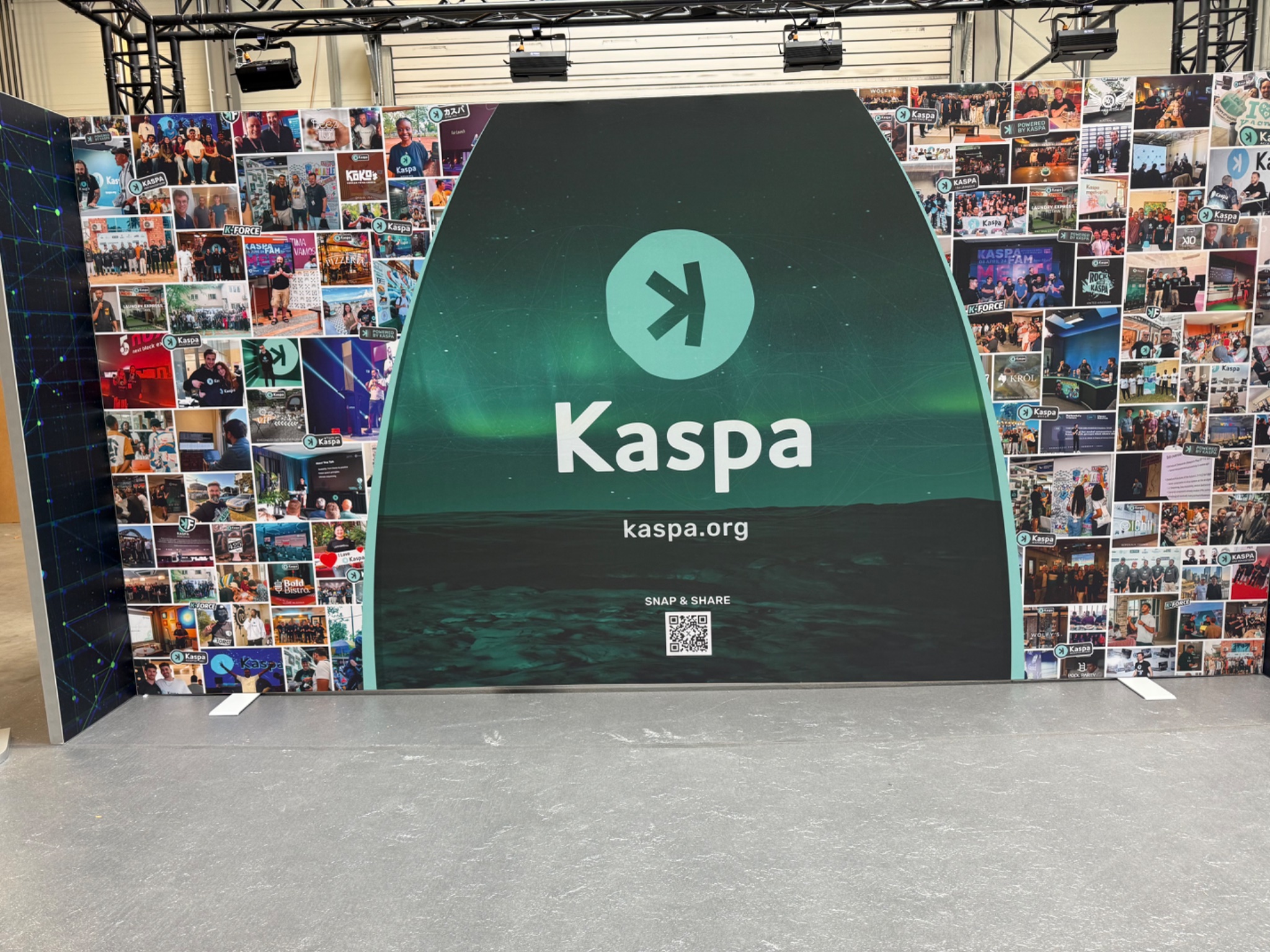
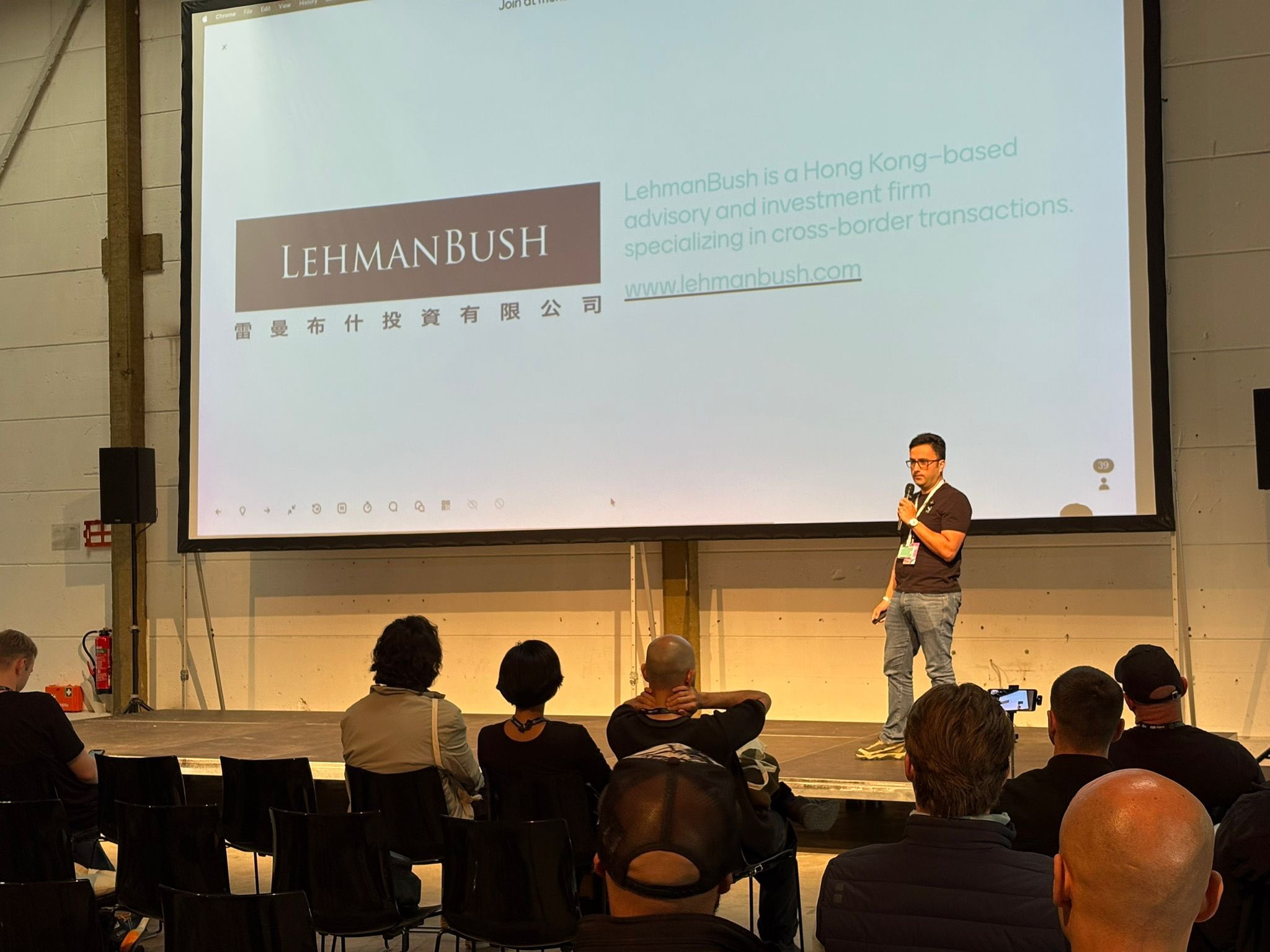
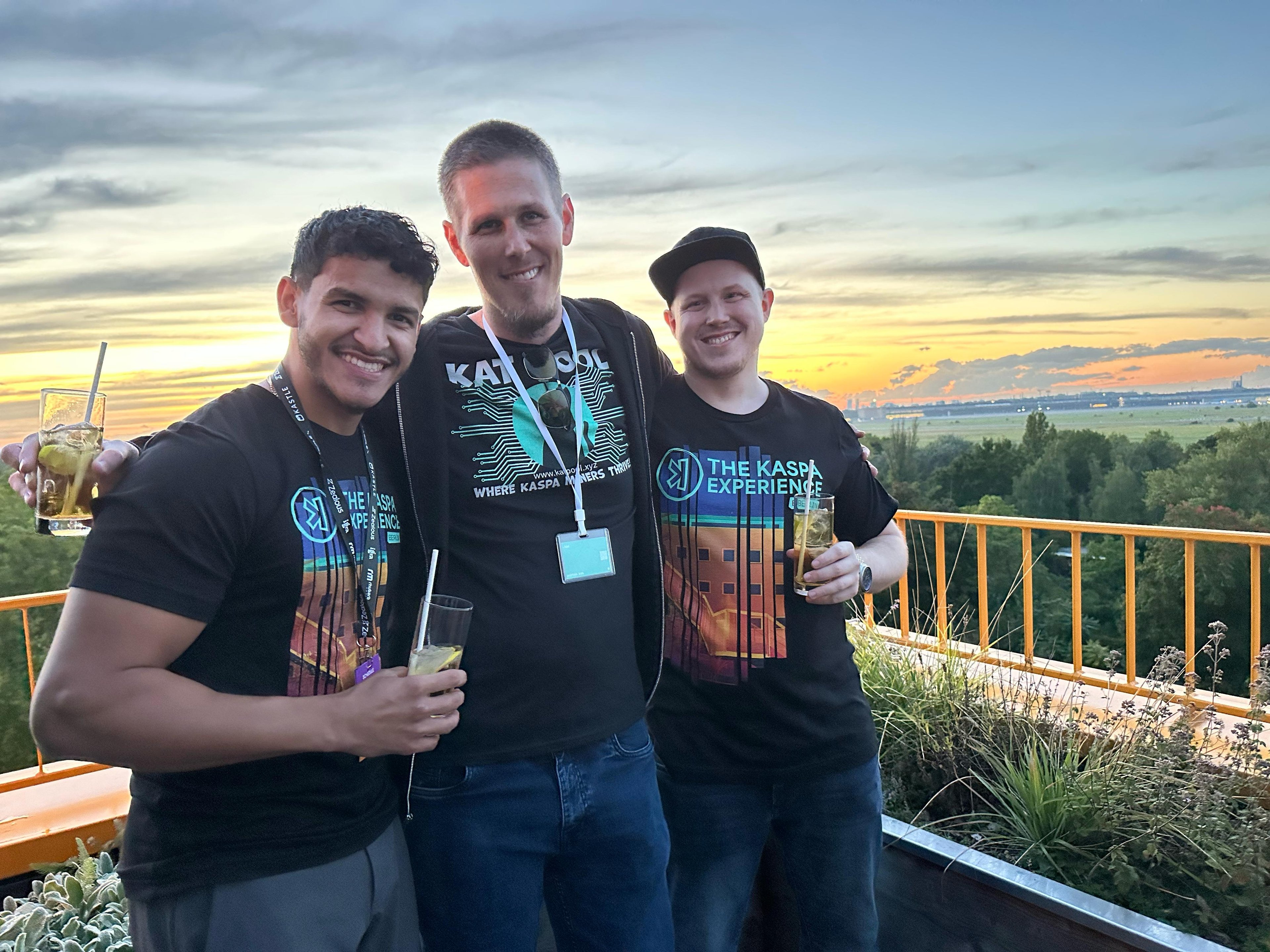


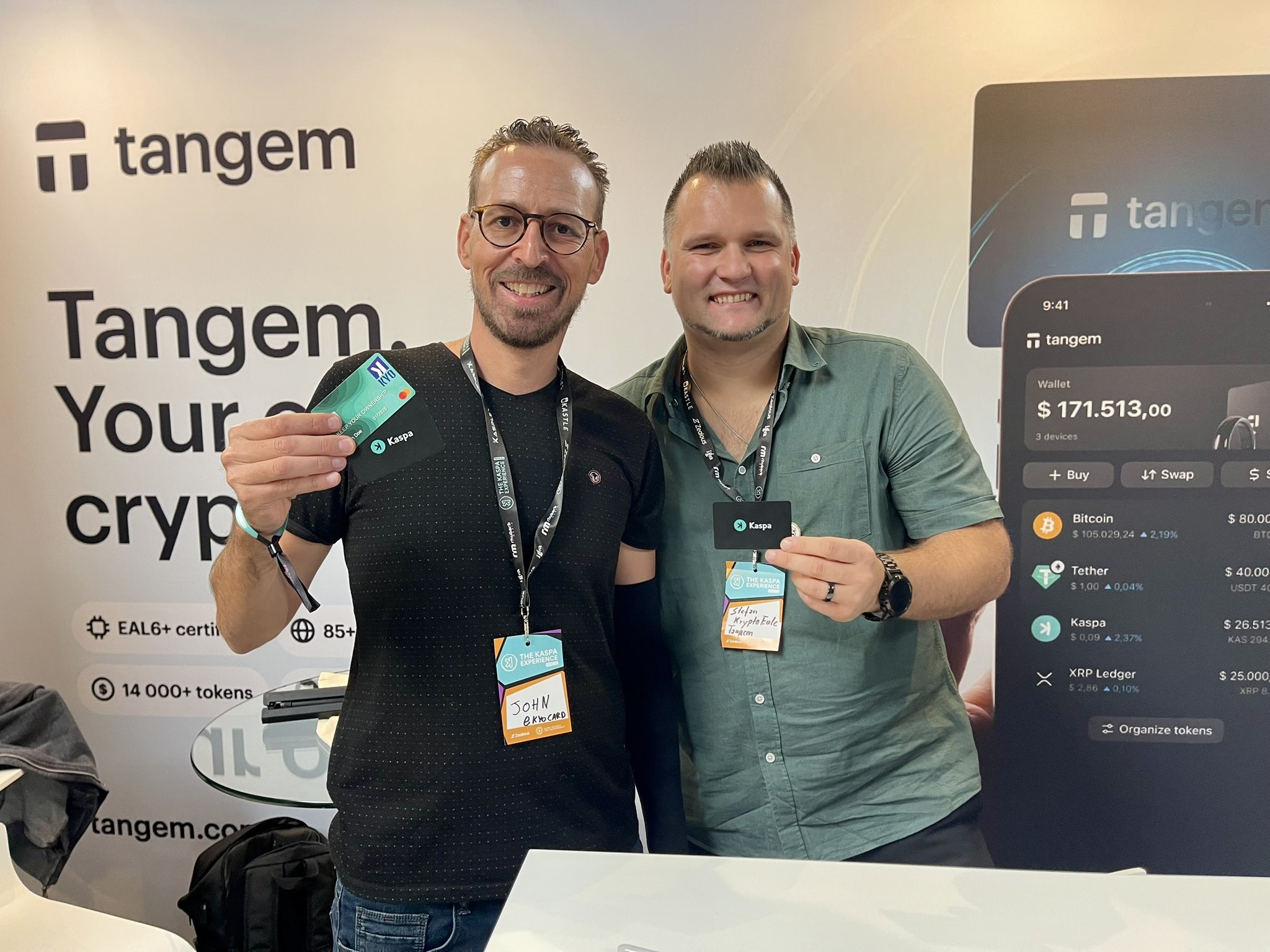
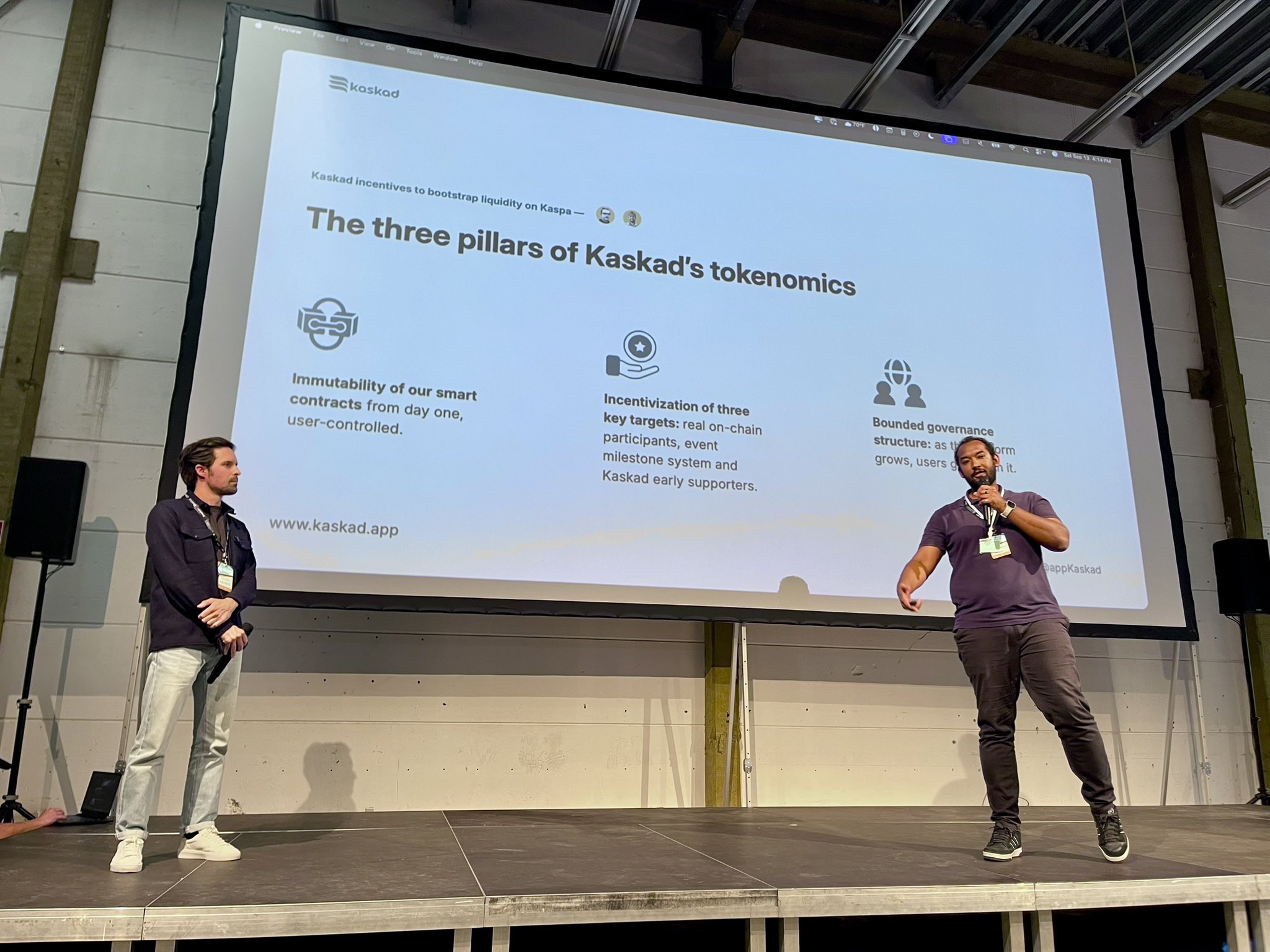
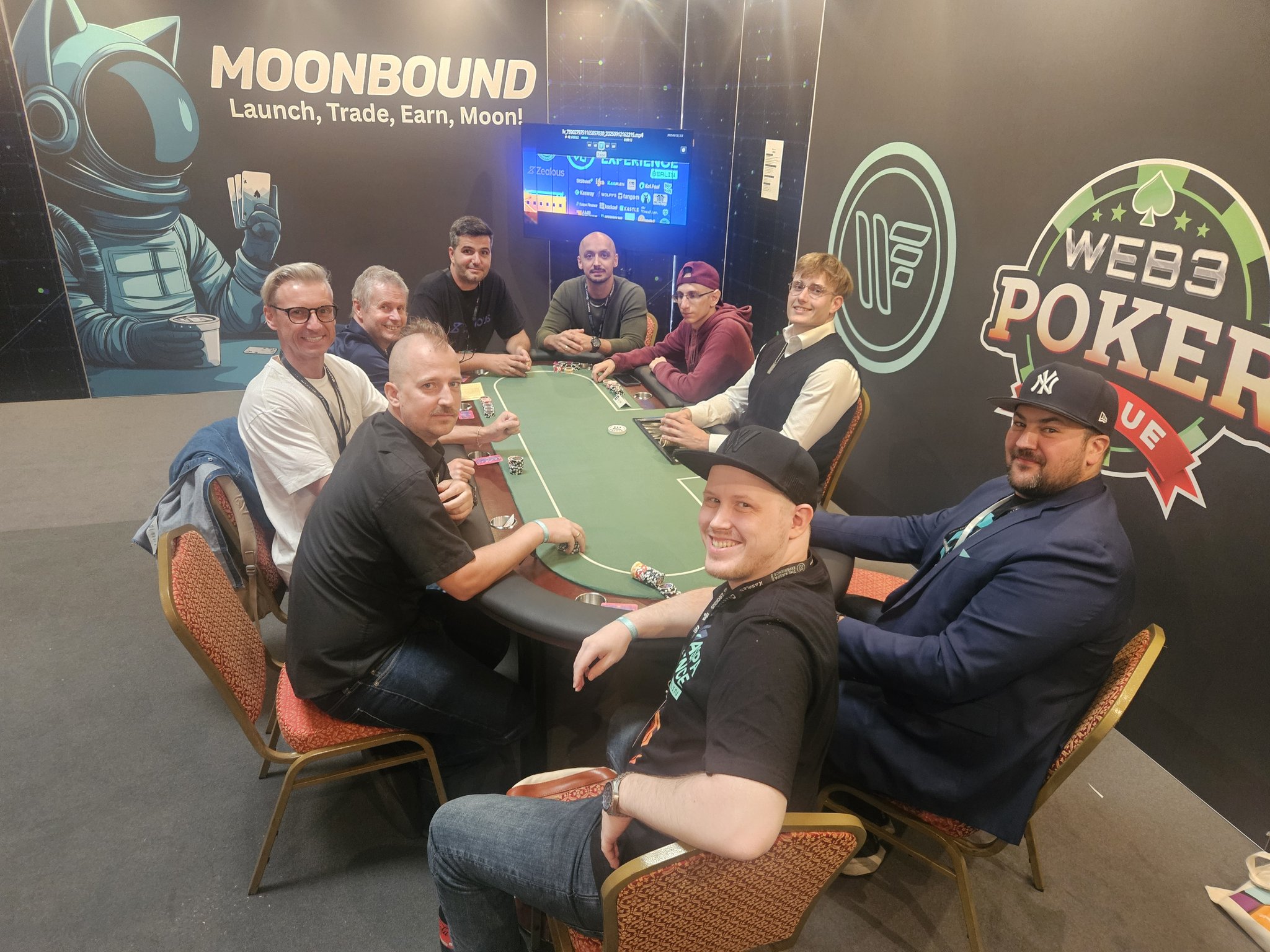
KAS Listed on WhiteBIT
WhiteBIT, one of Europe's largest crypto exchanges with over 8 million users across 150+ countries, has listed the KAS/USDT trading pair. The exchange is well-known for its partnerships with major soccer clubs, including FC Barcelona and Juventus.
The Kaspa Ecosystem Foundation (KEF) supported the listing process and is sponsoring a Kaspa trading competition on WhiteBIT to mark the occasion. Start trading today at whitebit.com.
Additionally, someone reached out to the KEF on X and asked if they were planning to meet with UpBit or Bithumb, and the KEF replied "yes". We are excited for more listings to come.
Kaspador on XXIM
This week on the XXIM podcast, host Ankit sat down with Kaspador, who works in business development for Kasplex, to share updates on the project. Kaspador addressed the delay of Kasplex's mainnet launch, originally planned for August 31. He explained that it was a strategic decision to ensure stability, scalability, and security, thereby avoiding the risks of downtime or attacks, rather than a result of technical bugs. The roughly 15-member team, led by Khris, made the decision collectively and now aims for a September rollout, though no official date has been confirmed.
Kasplex's priorities include DeFi, Web3, and programmability, with support for full, RPC-only, and lightweight nodes, and no staking required. While the team chose not to build a KRC20/ERC20 bridge to prevent centralization, they have provided the infrastructure for community-led solutions, and several third parties are already working on bridges. Kasplex also plans a gradual open-source release, starting with RPCs, while striking a balance between transparency and security.
Kaspador concluded by emphasizing the importance of audits, community engagement, and Kasplex's long-term role in expanding Kaspa's usability.
Check out the full interview here: https://www.youtube.com/watch?v=PTCL2Hwdyow .
New Rock the Kaspa
Our favorite brothers from across the pond are back with another can’t miss Rock the Kaspa episode. They do a great job of sharing Kaspa updates in a fun and engaging way.
The latest Rock the Kaspa episode kicks off with a humorous yet relatable take on vProgs: “I understand them so well that it’s hard to explain them.” The Hutchinson brothers pointed to a clear breakdown from @afpruivo on X, helping the community grasp how vProgs function as “mini smart contracts” at the Layer-1 level (mentioned above). They emphasized that Kaspa continues to innovate with entirely new architectures rather than copy-paste solutions, pushing into uncharted territory with features like vProgs, MEV resistance, and oracles.
The episode also highlighted progress on Kaspa’s Layer-2 ecosystem. Kasplex’s testnet has processed millions of transactions smoothly, while Igra Labs’ Caravel testnet launched in July with impressive performance and aims for 1,000+ TPS. Both are laying the foundation for stronger liquidity and scalability across Kaspa’s ecosystem.
With upcoming upgrades like DAG Knight, ZK bridges, and more integrations, the hosts noted there’s “never a dull day for Kaspa.” This episode perfectly captured the blend of humor, curiosity, and admiration for the builders pushing Kaspa forward.
The Kaspa Ecosystem Foundation (KEF) in Seoul
The Kaspa Ecosystem Foundation (KEF) was a title sponsor of the Onchain Symposium 2025 in Seoul, hosted by Tokenpost and CoinReaders, with Crypto.com and Tether as co-hosts. This was the very first Kaspa event in Korea, and we couldn’t be prouder. KEF even set up a “Kaspa Shop,” where attendees could spend and earn KAS while sampling local Korean snacks.
Ahead of the event, KEF teased a surprise initiative for the conference lunch. Over the weekend, it was revealed: the Inaugural Crypto Debate Invitational. The debate brought together Korea’s top university debaters to argue the motion, “This House Believes That Stablecoins Must Be Nationalized.”
The event featured a 3v3 hybrid AP format, international champions and finalists from leading institutions, an opening statement from Evie Yan (@evie_Y2001), and a distinguished judging panel.
This debut in Seoul also marks a significant milestone for Kaspa's global expansion and growing presence in Asia.

Zealous Swap Updates
The Zealous Swap ecosystem continues to deliver exciting progress, and this week is no exception. Fervent Finance has officially gone live on the Igra Labs Caravel testnet.
In parallel, Band Protocol has partnered with Fervent Finance to bring its lending protocol to Kaspa, with the Band Data Layer now live on the Kasplex testnet. Band provides “reliable real-time feeds, decentralized security, and plug-and-play access,” powered by data from CoinMarketCap, CoinGecko, and Kraken. With a spotless security record dating back to 2017, Band adds an extra layer of trust and robustness to Kasplex. Congrats to Zealous Swap x Band x Fervent Finance on this milestone!
Alongside the partnership, Fervent Finance has also launched its Beta 2 on the Kasplex testnet, following hundreds of simulations to strengthen the protocol before mainnet release.
Visit fervent.finance to try out Fervent Finance.
Pick up iKAS attps:/faucet.zealousswap.com.
KAS 4th Most Swapped Asset on Tangem
On September 8, 2025, Tangem posted that KAS was the fourth most-swapped asset. It closed behind all top-ten projects, XRP, BNB, and SOL. We are very proud to see KAS alongside those long-established projects.

KAS Biggest Activity Spike
Over the past 90 days, Kaspa has seen its strongest surge yet, with nearly 2 million transactions processed and more than 500,000 active addresses engaged. This uptick in on-chain activity underscores the growing momentum as the community prepares for the anticipated L2 launch. Special thanks to @DailyKaspa for sharing these stats.
Kasunder adds KAS Tracking
Kasunder, an established on-chain analytics site for KRC20 token, has recently added support for the KAS token as well. Now users can search back to the first KAS transactions. The site features analytics on an overview of the token, wallets, top-minting (for KRC20), and transactions. Additionally, users can learn more about the Kasunder roadmap at the site. The site features a sleek, intuitive user interface and is enjoyable to navigate. Check them out at Kasunder.com.
Kastle Wallet Update
Kastle Wallet rolled out several updates this month, bringing new features and improvements to its mobile app. Version 1.2.0, released on September 8, 2025, introduced QR functionality, allowing users to import wallets instantly via QR code, along with fixes to KNS (Kaspa Name Service) resolution in the Send feature. Kastle Wallet has supported KRC20 tokens since launch and also provides compatibility with KAS on L2 testnets.
On iOS, additional updates followed: v1.3.0 (September 12) added refreshed graphics, while v1.4.0 (September 13) enabled support for QR codes generated in the Kasway app.
Beyond technical upgrades, Kastle Wallet partnered with the Kaspa Experience in Berlin this past weekend. Attendees who purchased tickets with Kastle Wallet received a 75 KAS USD rebate, which could be spent on-site during the event.
Stay up to date by following them on X: x.com/KastleWallet.
Enjoyed reading this article?
More articles like thisComments
No comments yet!

